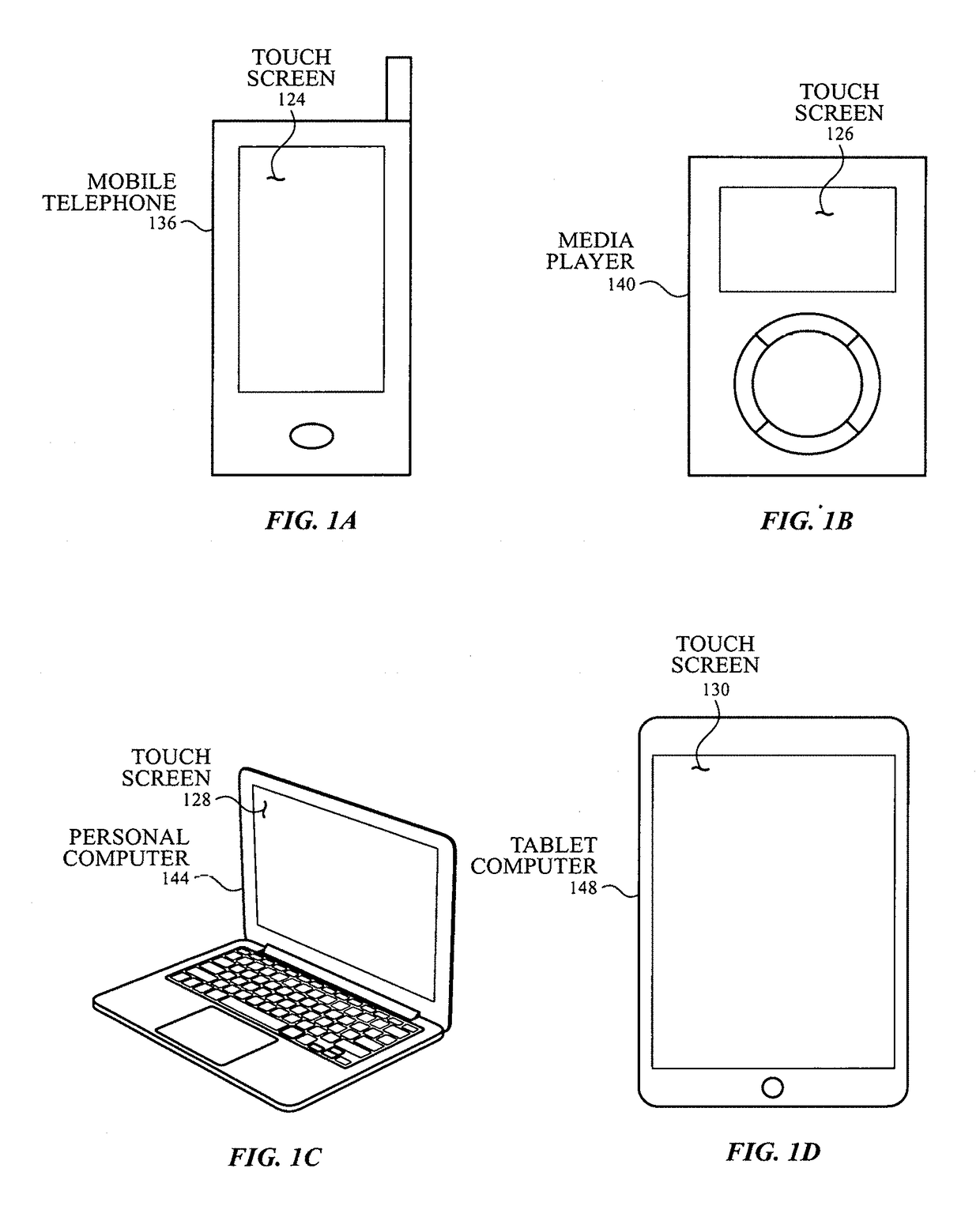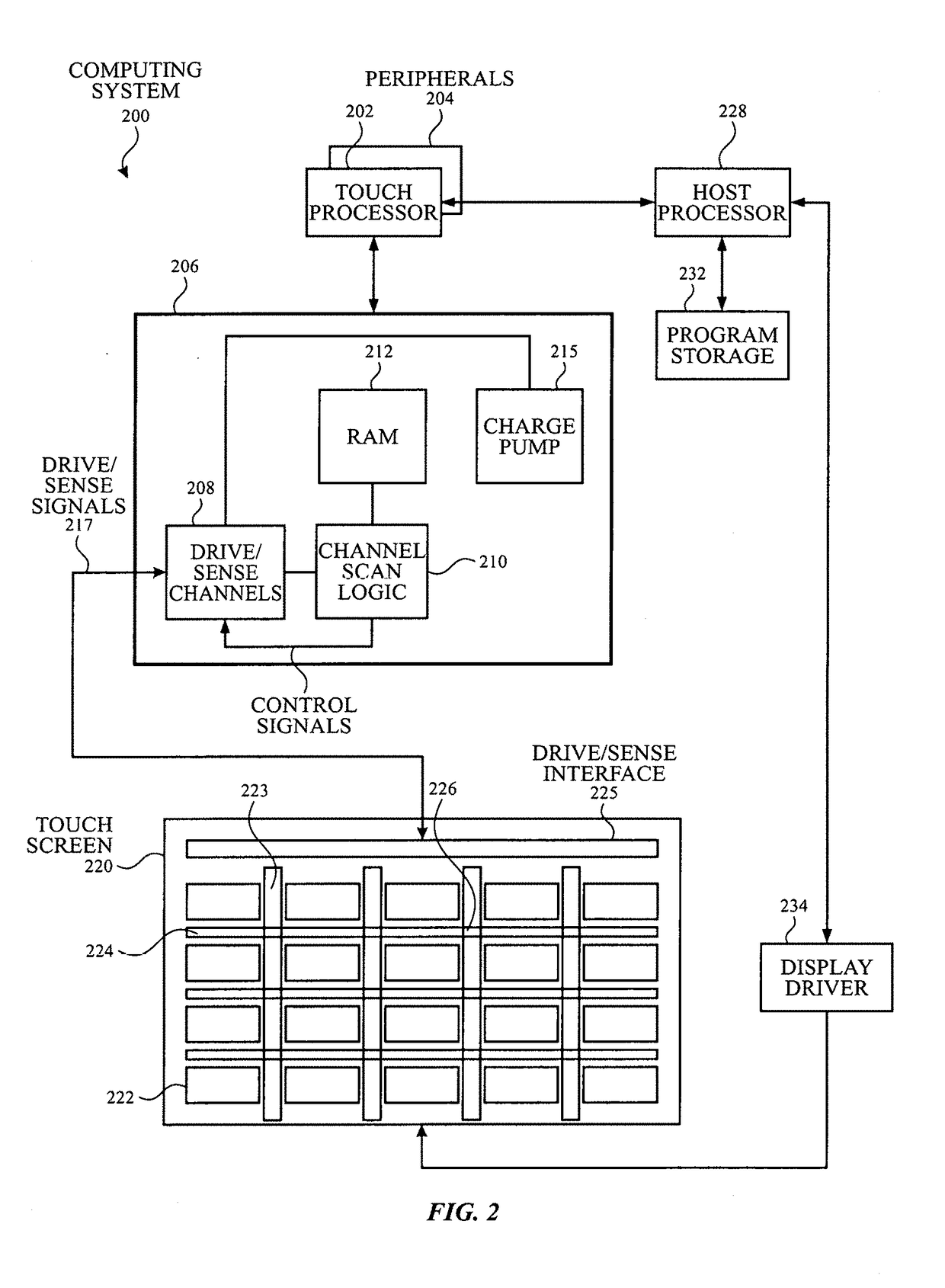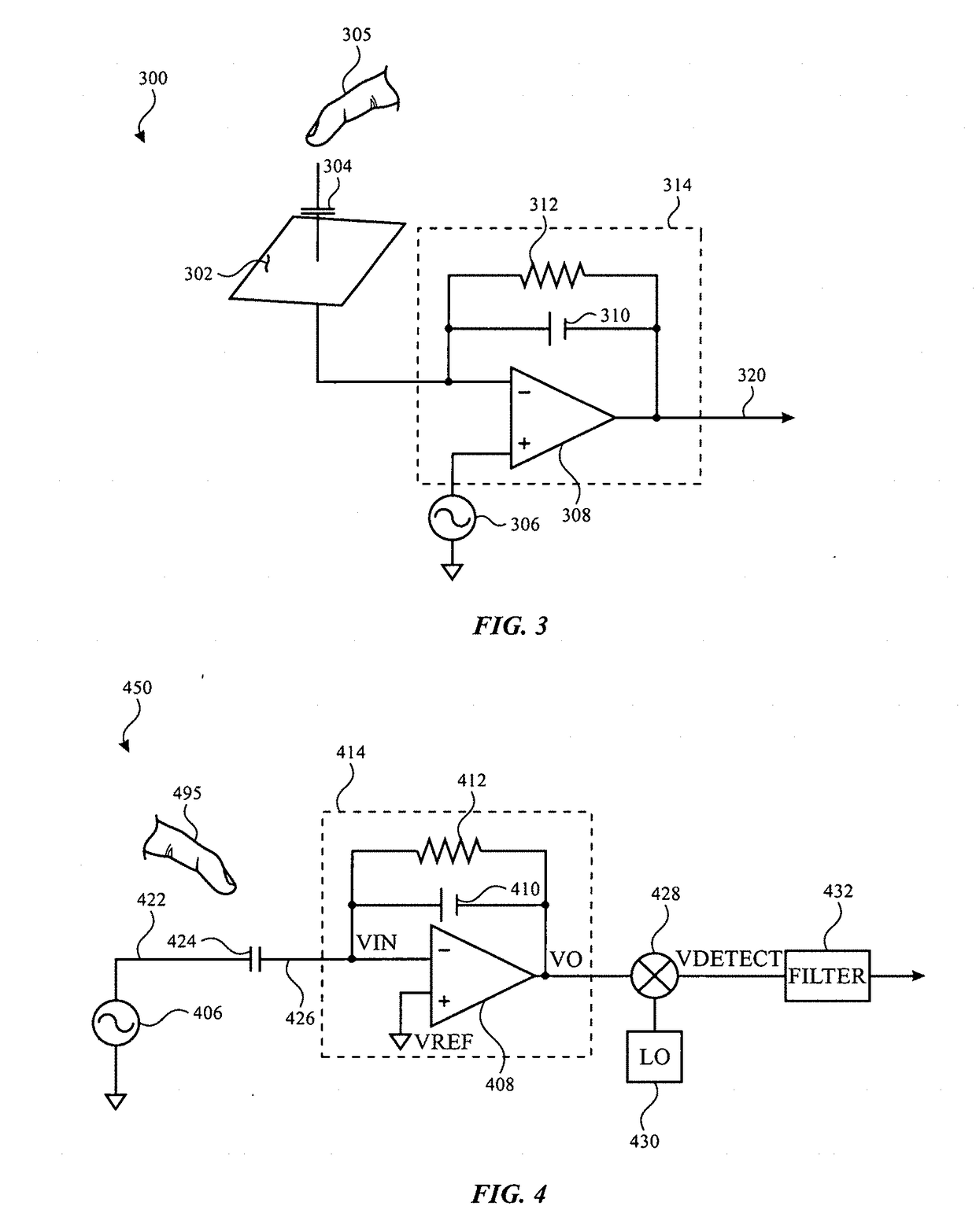Self-capacitance and mutual capacitance touch-sensor panel architecture
a technology of capacitance and touch sensor, applied in the field of self-capacitance and mutual capacitance touch sensor panel architecture, can solve the problems of introducing errors and/or offsets into the touch outputs affecting and affecting the accuracy of the touch sensor panel. , to achieve the effect of optimizing cost, high precision and improving the touch sensing performance of the system
- Summary
- Abstract
- Description
- Claims
- Application Information
AI Technical Summary
Benefits of technology
Problems solved by technology
Method used
Image
Examples
Embodiment Construction
[0016]In the following description of examples, reference is made to the accompanying drawings which form a part hereof, and in which it is shown by way of illustration specific examples that can be practiced. It is to be understood that other examples can be used and structural changes can be made without departing from the scope of the disclosed examples.
[0017]Described here are capacitive touch sensor panels. Generally, the touch sensor panels comprise a plurality of plates formed from a conductive material; these plates are referred to herein as “touch electrodes.” The touch electrodes may be made from any suitable conductive material (e.g., a transparent conductive oxide such as ITO or aluminum zinc oxide, a metal such as copper, a metal mesh material comprising a conductive cross-hatched metal structure with gaps between cross-hatched metal lines, carbon nanotube material, or any other suitable conductive material) which may be substantially transparent or non-transparent, dep...
PUM
 Login to View More
Login to View More Abstract
Description
Claims
Application Information
 Login to View More
Login to View More - R&D
- Intellectual Property
- Life Sciences
- Materials
- Tech Scout
- Unparalleled Data Quality
- Higher Quality Content
- 60% Fewer Hallucinations
Browse by: Latest US Patents, China's latest patents, Technical Efficacy Thesaurus, Application Domain, Technology Topic, Popular Technical Reports.
© 2025 PatSnap. All rights reserved.Legal|Privacy policy|Modern Slavery Act Transparency Statement|Sitemap|About US| Contact US: help@patsnap.com



